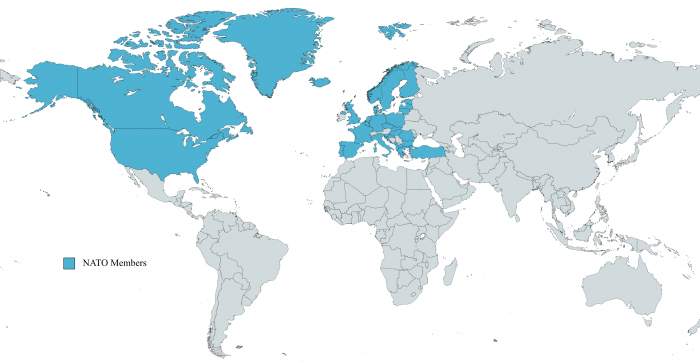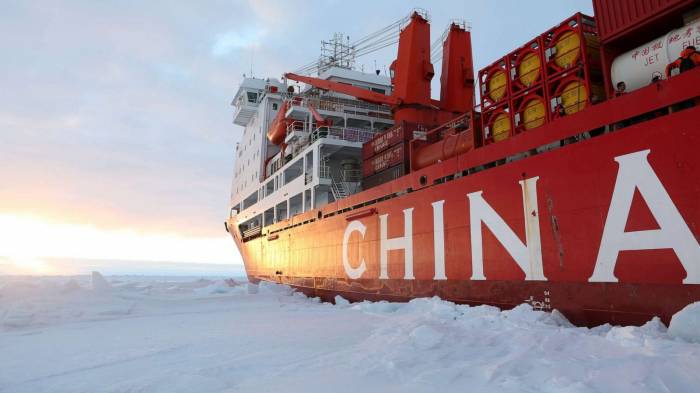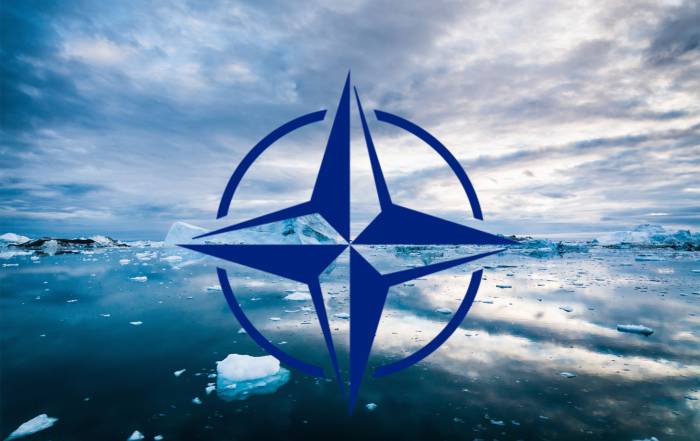Editor’s note: Einar Graudiņš, political scientist and retired Senior Officer of the Ministry of Defense of the Republic of Latvia. The article expresses the personal opinion of the author and may not coincide with the view of News.az.
NATO ’s recent moves to deploy U.S. troops in Norway, Finland, and Sweden mark a significant shift in the alliance’s strategic posture in the North. These efforts are part of a broader plan to create a strategic counterweight to Russia by consolidating military presence in the Arctic Ocean and the Baltic Sea. The ultimate goal appears to be transforming these bodies of water into NATO-dominated zones, further tightening the geopolitical encirclement of Russia.

This development must be viewed in the context of territorial concessions made by Russia in previous years, a subject that remains largely unspoken within Russian discourse. Around 2010, substantial swathes of Russian territory were transferred to other nations, including China, Norway, Azerbaijan, and Kazakhstan. The most striking case was the agreement with Norway, under which Russia ceded approximately 80,000 square kilometers in the Barents Sea. Just three years later, Norwegian geologists discovered vast oil reserves —more than two billion barrels—in the waters that had been handed over, a resource valued at tens of billions of dollars.
Such decisions raise fundamental questions about the strategic vision guiding Russia’s territorial policies. Unlike Azerbaijan, which engaged in a prolonged struggle to reclaim Nagorno-Karabakh based on international law, Russia voluntarily relinquished territories of significant economic and strategic importance. Given this precedent, any claim that Russia is aggressively expanding its territory today appears not only misleading but entirely contradictory to its recent historical actions.
The Arctic presents an even more complex scenario. International norms governing territorial claims in this region remain ambiguous. The Arctic is legally composed of land, internal waters, territorial seas, and exclusive economic zones of eight states: Canada, Denmark (via Greenland), Finland, Iceland, Norway, Russia, Sweden, and the United States. However, the North Pole and surrounding waters remain outside the jurisdiction of any single nation. Historically, the Arctic had no clear ownership until the 1920s, when the Paris Convention divided it into five sectors among the Soviet Union, the United States, Canada, Norway, and Denmark.

Russia, as the legal successor of the USSR, maintains a strong legal basis for its Arctic claims. However, territorial delineation in the Arctic is far from settled, and competition for control over this resource-rich region is intensifying. Climate change is transforming the Arctic into an economic and strategic hotspot, with melting ice caps revealing untapped natural resources valued in the trillions. The Northern Sea Route could emerge as a major global trade corridor, providing a viable alternative to the Suez Canal—particularly for China, which is eager to secure faster trade routes.
For the United States, control over the Arctic is a critical national security priority. Greenland, for example, plays a pivotal role in ballistic missile defense, highlighting the region’s strategic significance beyond just economic considerations.
Washington has already made claims over Greenland, signaling its broader Arctic ambitions. The geopolitical interests of NATO members, combined with the increasing economic potential of the region, suggest that Arctic territorial disputes will only intensify in the coming years. The alliance’s military presence in Norway, Finland, and Sweden is not just a response to Russia’s strategic initiatives but also an attempt to establish long-term control over this crucial region.
Despite Russia’s military capabilities, its economic constraints and infrastructure challenges pose significant obstacles to maintaining control over the Arctic. The ongoing conflict with Ukraine is depleting essential resources, further undermining Moscow’s ability to assert dominance in this contested region. Without a fundamental shift in its domestic and foreign policies, Russia risks losing influence over the Arctic, a scenario dictated by unfavorable demographic and economic trends. Furthermore, Moscow’s increasing economic dependence on China could lead to compromises in its ability to act independently in Arctic affairs. While both countries share concerns about U.S. influence in the region, China has its own long-term Arctic interests, which may not always align with those of Russia.

The Arctic struggle is merely one aspect of a broader global geopolitical contest. While Russia possesses substantial military assets, economic stability and strategic foresight are equally critical in securing long-term influence. The example of Türkiye under President Erdogan demonstrates how a nation can effectively navigate complex international challenges while maintaining territorial integrity and strategic leverage. Türkiye’s approach to regional power projection, economic resilience, and diplomatic balancing has allowed it to remain a key player in multiple global theaters. Russia, on the other hand, faces a series of internal challenges, including economic stagnation, demographic decline, and technological shortcomings, all of which could undermine its position in the Arctic.
Moreover, the role of the European Union in the Arctic should not be overlooked. The EU has been actively working to position itself as a key stakeholder in Arctic governance, advocating for stricter environmental regulations and sustainable development policies. These initiatives, while ostensibly aimed at protecting the region’s ecosystem, also serve a strategic purpose: limiting Russia’s ability to exploit Arctic resources. The push for international environmental frameworks could restrict Russia’s economic activity in the region, further exacerbating its vulnerabilities.
Russia’s future in the Arctic will largely depend on its ability to address its internal economic and political challenges while countering external pressures from NATO and the United States. The window for Moscow to consolidate its influence in the region is rapidly closing. If Russia fails to develop robust economic and strategic policies, it could find itself marginalized in the Arctic, much as it has been in other geopolitical arenas.
Ultimately, the Arctic is shaping up to be a key battleground in the ongoing global competition for resources, influence, and strategic positioning. The next decade will determine whether Russia can retain its status as a major Arctic power or if its ambitions will be curtailed by economic constraints, strategic miscalculations, and increasing external pressure from NATO and other global players.
(If you possess specialized knowledge and wish to contribute, please reach out to us at opinions@news.az).
